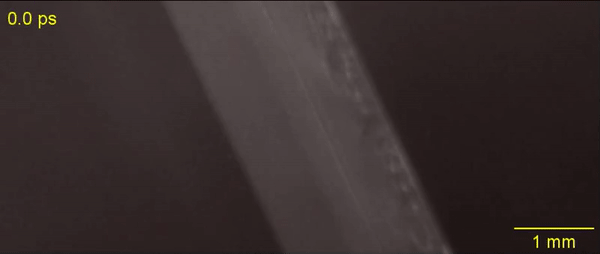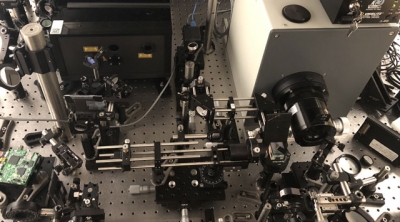Light in slow motion
Oct. 2018
At 10 trillion frames per second, this camera captures light in slow motion

Light is the fastest thing in the universe, so trying to catch it on the move is necessarily something of a challenge. We’ve had some success, but a new rig built by Caltech scientists pulls down a mind-boggling 10 trillion frames per second, meaning it can capture light as it travels along — and they have plans to make it a hundred times faster.
Understanding how light moves is fundamental to many fields, so it isn’t just idle curiosity driving the efforts of Jinyang Liang and his colleagues — not that there’d be anything wrong with that either. But there are potential applications in physics, engineering, and medicine that depend heavily on the behavior of light at scales so small, and so short, that they are at the very limit of what can be measured.

You may have heard about billion- and trillion-FPS cameras in the past, but those were likely streak cameras that do a bit of cheating to achieve those numbers.

The trillion-frame-per-second compressed ultrafast photography system.
If a pulse of light can be replicated perfectly, then you could send one every millisecond but offset the camera’s capture time by an even smaller fraction, like a handful of femtoseconds (a billion times shorter). You’d capture one pulse when it was here, the next one when it was a little further, the next one when it was even further, and so on. The end result is a movie that’s indistinguishable in many ways from if you’d captured that first pulse at high speed.
This is highly effective — but you can’t always count on being able to produce a pulse of light a million times the exact same way. Perhaps you need to see what happens when it passes through a carefully engineered laser-etched lens that will be altered by the first pulse that strikes it. In cases like that, you need to capture that first pulse in real time — which means recording images not just with femtosecond precision, but only femtoseconds apart.
That’s what the T-CUP method does. It combines a streak camera with a second static camera and a data collection method used in tomography.
At any rate the method allows for images — well, technically spatiotemporal datacubes — to be captured just 100 femtoseconds apart.
Source
- techcrunch (scroll down for the animated GIF file)
17. October 2018, Beni Muller + Iris Bollinger, rev. 28 Oktober 2020

